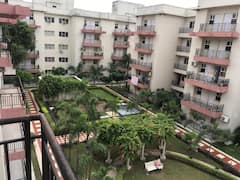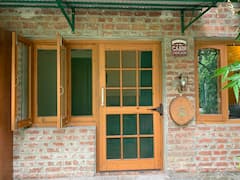Amritsar is the second-most-populous city in Punjab, India. It is a city that offers a unique blend of history, culture, and tradition. Amritsar is known for being the spiritual and cultural center of Sikhism. A popular attraction is the beautiful and unique Golden Temple which is considered to be the most sacred place and is used for worship. This temple is open to everyone and you can admire its beautiful architecture and decorations with real gold and marble. Around it is a man-made pool called Amrit Sarovar where pilgrims bathe to purify themselves and seek blessings. Other buildings in the complex include Akal Takht, Central Sikh Museum, and Langar which is a community-run kitchen that offers free vegetarian meals to the visitors. Amritsar also has markets where you can shop for traditional apparel and try the delectable local cuisine as you explore this city. Read on to know more about the top things Amritsar is famous for.
1. Golden Temple (from USD 30.0)
The Golden Temple is the spiritual and cultural center of Sikhism and is their most important shrine. It is their sacred place of worship and is decorated with real gold and marble. Within the complex are several other buildings. The Akal Takht is the seat of authority of the Sikh and is also the resting place of the holy book, Guru Granth Sahib. The temple complex also has the Dukh Bhanjani Ber Tree and the famous Maharaja Ranjit Singh Statue which is a historic landmark in Amritsar. Considered the holiest of places, one must respect the premises and adhere to its rules. This complex sheds light on the religious practices and beliefs of the Sikhs.
Amritsar Golden Temple Tour
Duration: 2 to 3 hours
2. Kulcha

Kulcha is an Indian dish comprised of mildly leavened bread made from maida flour, salt, water, and a leavening agent such as yeast. It is usually flat and round in shape and brushing with butter or ghee is optional. Amritsari kulcha is known to be one of the best kulcha you can find. It is very crispy and has an amazing flavor. The stuffing includes paneer, potatoes, onions, and a variety of vegetables seasoned with aromatic spices. It is often served with Indian curry and a popular choice would be chole, a spicy chickpea curry. This heavenly delight can be eaten as breakfast, lunch, or dinner.
3. Woolen Products

Amritsar is one of the cities in India that produces a wide variety of woolen products. This includes shawls, sweaters, mufflers, blankets, and carpets which are available in several shops and local markets. Shop for garments to keep you warm during the cold season from local markets here such as Hall Bazaar and the market on Lawrence Road. The advantage is that they are sold at relatively fair prices and it’s a plus if you are good at bargaining. The markets also have a lot of street food vendors and restaurants where one can grab a tasty bite to eat as they shop.
You might be interested in these Airbnbs!
4. Traditional Apparels

India is one of the countries with a unique dressing style that is recognized in different parts of the world. Amritsar has several shops and stalls where you can get Punjabi traditional apparels such as phulkari, Punjabi jutti, the jama, Patiala salwar, ghagra, and turban. These clothing items reflect Punjabi traditions and their exquisite culture. They feature different patterns and flowers and their beauty is undeniable. Kapda Bazaar is one of the places in this city which is always crowded with people shopping for eye-catching traditional apparel.
5. Religious items/products

Being the spiritual center of Sikhism, Amritsar has an abundance of religious items that are sold near the Golden Temple or Gurudwaras everywhere. Gurudwaras are places where Sikhs assemble to worship together. Outside such places, there are several shops selling religious items displayed in an attractive manner. These items include Sikh turbans, karas, khandas, kirpan, khanga, small pocketbooks called Gutkas, Guru Granth Sahib, and religious paintings and photographs.
6. Wagah Border (from USD 50.0)
The Indo-Pak parade ceremony at the border of India and Pakistan comprises a number of theatrics done on a daily basis by Indian and Pakistan security forces. It is a symbol of brotherhood and cooperation between the two countries. The ceremony starts at sunset with the crowd singing patriotic songs. The soldiers then march towards the gates on their respective sides, the gates are opened, they salute each other and start lowering the flags simultaneously which are then folded. At this point, the crowd goes silent and only the clomping of the soldiers’ boots can be heard. The ceremony then ends with the soldiers shaking hands briskly and retreating.
Amritsar Wagah Border Tour
Duration: 4 to 5 hours
7. Phulkari Work

Phulkari is the traditional embroidery of Punjab with designs that feature flowers, leaves, cover motifs, and geometrical shapes. Punjabi women patiently create countless appealing and interesting designs and patterns through skillfully manipulating darning stitch. The patterns are usually made on the coarse side of a thick cotton fabric known as khaddar using brightly colored silken threads such as yellow, orange, and red. At the bottom, the fabric color is left exposed. Traditionally, when a daughter was born, the older women in the family made phulkari for her which she was gifted on her day of wedding as part of her dowry. Phulkari is still popular and is worn by women on auspicious occasions such as weddings.
8. Sandalwood

Sandalwood is a type of perfumed wood that retains its scent for ages. In Amritsar, its wood and oil are considered to be sacred and are used as a part of prayer. Sandalwood powder is made by grinding sandalwood on granite slabs by hand and adding water to make a paste. It is only made by those who are considered pure such as priests. The paste is then used in performing rituals, making religious items, and decorating models of deities. People apply it to their foreheads during prayer. Its oil is also used to make various cosmetics.
9. Baisakhi Festival

On the 13th or 14th of April every year, the auspicious Baisakhi festival is celebrated to mark the first day of Vaisakh (Summer) month, to commemorate the day when Guru Gobind Singh established the Khalsa Panth, and for farmers to present their first harvest to the lord as a way of showing gratitude for a healthy harvest. The festival begins with special prayers at the Golden Temple and distribution of Karah prasad (sacred pudding - a holy offering). People then wear colorful traditional clothes and jewelry and participate in the procession of Guru Granth Sahib through the streets. There is bhangra dancing, singing of folk music, and feasting. Outside the temple are stalls selling trinkets, handicrafts, and local cuisine. This festival attracts people from all over who come to experience it.
A journey to Amritsar: where religion meets tradition
Enchanting Amritsar is a city that is the center of Sikh religion and with deep-rooted traditions, culture and, delectable local cuisine. It is no surprise that it attracts tourists from all over. Discover top things Amritsar is famous for.
History
Get Trip101 in your inbox
Unsubscribe in one click. See our Privacy Policy for more information on how we use your data




































Create an account to